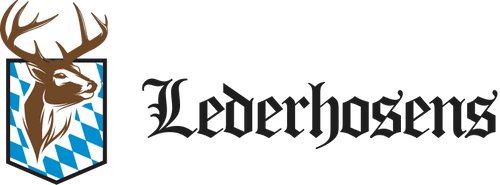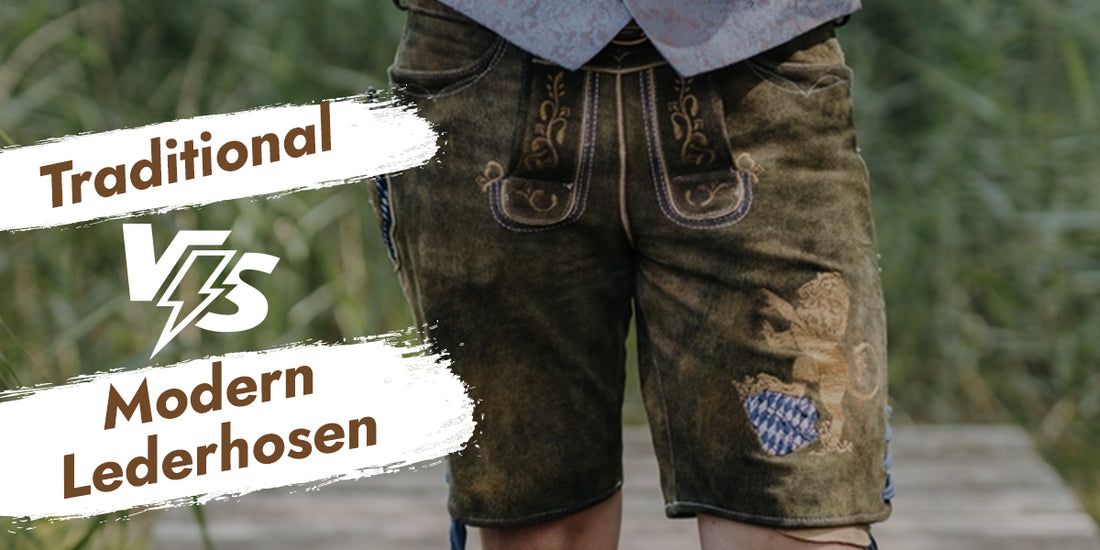From humble Alpine beginnings to modern-day fashion, German Lederhosen carries centuries of unmatched history. The Bavarian Lederhosen is a symbol of German culture and its rich traditions. It is worn annually at the Oktoberfest by millions of attendees in Munich and millions worldwide at the smaller Wiesn celebrations. Apart from the annual tradition, embroidered Lederhosen shorts have become a fashion statement across the globe and everyday wear in Germany.
With its immense strength and durability, Lederhosen wasn’t designed for festivals and gatherings but to withstand the harsh weather of the Bavarian and Austrian alpine regions. The intricate embroidery and various colors we enjoy today were also added later. Let’s explore the evolution of the official Oktoberfest outfit for men and what has changed over the years.
The Alpine Origins of the Lederhosen
Lederhosen is derived from the German word “Lederhose,” meaning “Leather Breeches/Pants.” It was introduced in the 18th century as workwear for working-class men in the alpine Bavarian and Austrian regions. The cowhide or goatskin leather material allowed utmost flexibility and durability in rainy weather, making the job easier for peasants and farmers.
After the first Oktoberfest in 1810, Lederhosen gained attention from the upper Bavarian class, who created a premium and fashionable version of the original shorts. After years of ups and downs, traditional German lederhosen was declared the official Oktoberfest outfit for men, alongside Dirndl for women, in 1887. Fast-forward to today, and the alpine Bavarian Tracht is a globally admired outfit and an essential part of the Oktoberfest celebrations.
Authentic Materials: Has the Quality Changed?
With an authentic piece of Lederhosen, you can jump into Bavarian culture and become part of the Oktoberfest party. But what is an authentic Lederhosen? The most significant factor that defines a genuine Lederhosen is the material. Traditional Lederhosen used original goatskin and cowhide for their manufacturing.
The output was a rough and sturdy leather trouser that could endure the cold, rainy weather of the mountains. The leather kept the body warm in cold weather and cool in the hotter seasons. Furthermore, the rough surface became shinier with use, and the Lederhosen would last for generations.
The modern Lederhosen, a fashion outfit, successfully carries the essence of traditional Lederhosen. Although the original look and feel of the Bavarian Lederhosen are preserved thanks to designers and manufacturers, here are the modernizations applied for improved comfort and wearability:
- Pre-softened Leather: Traditional leather had a break-in period, during which it would feel stiff in the first few wears and gradually adapt to the wearer’s body. Modern tanning techniques have reduced the break-in period while retaining durability. You can feel a flexible and comfy Lederhosen on the first wear.
- Lighter Materials: Traditional Lederhosen used heavier leather cuts; the tanning process involved heavier oils and fats. The modern Lederhosen has adopted thinner cuts of deerskin and cowhide, which are processed with mink and neatsfoot oil for better flexibility and waterproofing.
Styles that Carry the Trend: Lederhosen and Bundhosen
Lederhosen, the above-knee-length leather breeches, and Bundhosen, the below-knee-length leather trousers, have co-existed for centuries. Traditional Bavarian Lederhosen got more prominence thanks to Oktoberfest and hence is more often mentioned than Bundhosen. While Lederhosen was worn on festive occasions, Bundhosen were usually suited for a formal setting, colder weather, and safer labor activities. The longer length of the Bundhosen allowed it to withstand cold and prevented the knees from getting dirty or injured if a man had to bend or kneel.
The modern Lederhosen and Bundhosen are fashion statements across the globe worn primarily at the Munich Oktoberfest. Although both styles offer the same traditional functionality, there’s no specific occasion for wearing Lederhosen or Bundhosen. Modern fashion has even allowed wearing the Bavarian Trachten outfit to your wedding, let alone parties and formal gatherings.
Women Lederhosen has also been introduced in modern fashion. These leather breeches are made from the same materials but follow a feminine design pattern. Lederhosen for women are also available in multiple sizes, colors, and embroidery designs for modern women to show off their feminine look.
Embroidery and Stitching: Adorning the Traditional Piece
The intricate hand-embossed embroidery gives Lederhosen a contemporary and seductive look. But embroidery wasn’t part of the original Lederhosen. When Lederhosen gained popularity among the upper class, they gave the alpine workwear a signature look. High-quality deerskin leather was topped with meaningful hand-embossed embroidery to create the Lederhosen that we wear to date.
With growing time, the embroideries changed, and so did their meanings. Traditionally, the embroidery on a person’s Lederhosen shorts signified the region of their belonging. The modern Lederhosen features embroidery that symbolizes a feeling, personality, or emotion. Here are some common motifs that you’ll find in modern Lederhosen:
- Majestic Stags & Deer Motifs: A symbol of spiritual authority, often seen as Christ protecting his men.
- Playful Edelweiss: Represent noble purity and devotion as the Edelweiss flower grows in some of the harshest alpine conditions.
- Bavarian Coat of Arms: Symbolizes courage and royalty, an ancient symbol of Bavaria.
- Oak Leaves: A depiction of nobility, strength, and justice.
Choose a motif that represents your personality and depicts your inner self through intricately patterned embroidery.
Functional Elegance of the Bavarian Lederhosen
The soft, sturdy, and durable nature of leather makes Lederhosen a functional outfit, which is also the reason for its immense popularity and demand. Lederhosen made of high-grade deerskin or cowhide leather can serve every season and endure every weather condition. They can keep you warm in the cold, cold in hot weather, and resist rain like none other. These core functional properties have been carried for centuries, from traditional Lederhosen to modern ones.
While functionality is retained, the application area has changed over the years. Lederhosen was created to withstand the harsh weather and labor conditions in the alpine regions, to which the Bavarian Tracht perfectly applied. Today, Lederhosen is not just a part of Oktoberfest by tradition but also by need. With an average of 7.2 million people drinking 5.6 million liters of beer, there’s a high probability that you spill some on your clothes. With its double-shaded fabric, Lederhosen avoids beer stains and can easily withstand all the jumping, dancing, and drinking at the crowded Oktoberfest tents.
Final Words: Honoring the German Culture
Modern fashion has also introduced lighter materials and denim versions of Lederhosen, which some people wear at Oktoberfest. But for those who understand culture and respect traditions, authentic Lederhosen and Dirndl are the way to go. So, wear an original piece of premium Lederhosen that will give you an unmatched Oktoberfest experience. Raise a stein to the rich Bavarian culture as you sway to the brass band music on top of the tables at Oktoberfest or dance to the party music at your next night out.

